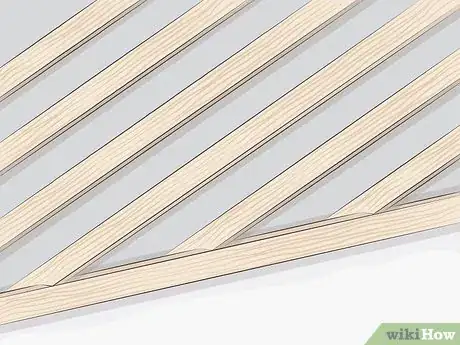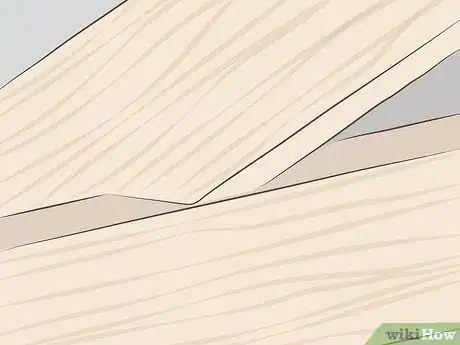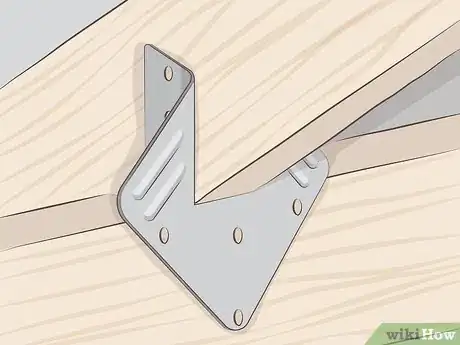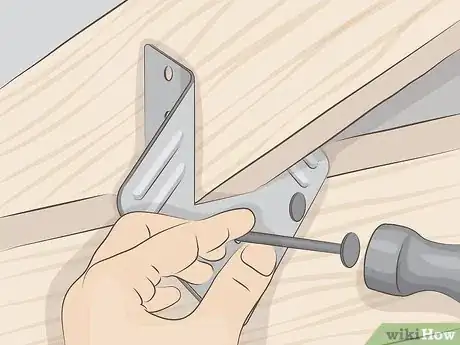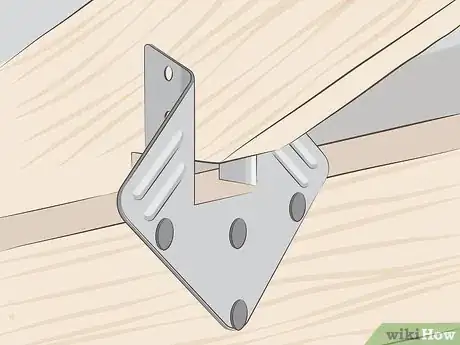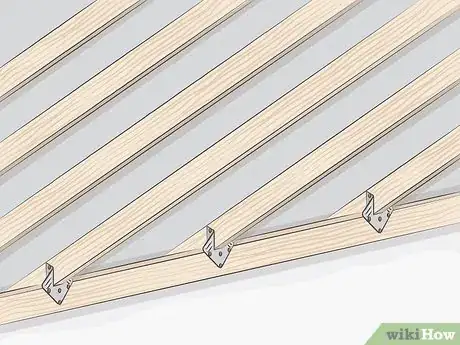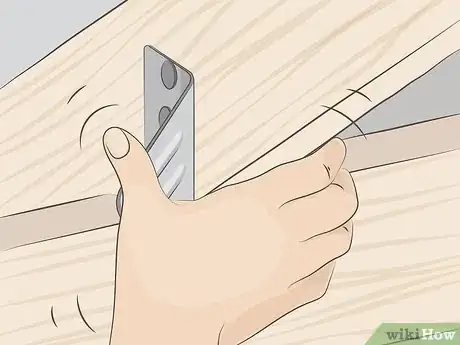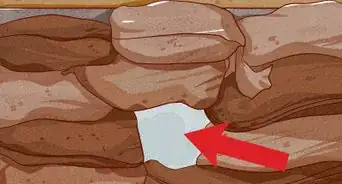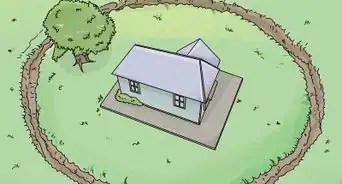This article was co-authored by Steve Linton. Steve Linton is the President of Deltec Homes, a custom home building company in Asheville, North Carolina. With nearly 20 years of experience, he oversees all home building projects for Deltec Homes. He specializes in hurricane-resistant homes, green home design, and sustainable building. Steve holds a BS in Structural Engineering from Cornell University and is a LEED Accredited Professional.
There are 7 references cited in this article, which can be found at the bottom of the page.
This article has been viewed 60,759 times.
Hurricane clips are a fantastic way of securing potentially hazardous parts of your house in stormy weather. These clips work by further strengthening the bond between the roof and the walls of your house so the roof does not blow away in a hurricane. They are relatively inexpensive and if you want to install them by yourself, then they just require a little bit of care and attention.
Steps
Preparing Your Roof to be Secured
-
1Examine your roof for diagonal beams. You need to get into the attic of your roof using a ladder and inspect the connections between the diagonal beams and horizontal beams. Doing this means you can go to the hardware store and be sure that you are buying the right amount of clips. You need a clip for every diagonal beam that attaches to a horizontal beam.[1]
- Hurricane clips are metal straps that connect the roof truss to the top of a wall. That way, the roof system won't blow off during a hurricane.[2]
- Always take caution when using a step-ladder and make sure you have someone there to hold the ladder still.
-
2Purchase the H-1 hurricane clips from your local hardware store. Once you've measured how many clips you need, you are ready to go out and buy them. Buy a couple extra just in case you need more than you measured.[3]
- There should be instructions that come with the clips so hang onto these for future reference if you get stuck.
Advertisement -
3Locate where the pieces of wood meet. You are strengthening the roof by securing two pieces of wood. One piece runs parallel to the ground and the other runs diagonally upwards to meet another piece of wood in the middle.
- The diagonal piece meets the flat piece at the base and this is where the clip goes.
- You may be installing these clips before the diagonal beams have been fitted. If this is the case, simply mark with a pencil where you anticipate the diagonal beams going.[4]
-
4Position the clip so the gap in it is pointing forward into the house. The clips have a space where the wooden beam can sit in it. This space needs to be pointing forward into the house for the clip to work effectively.
- If you are having trouble figuring out how to position the clip, it attaches to the outside of the horizontal beam and there will be a ‘U’ shaped gap where the beam sits in.
- The gap in the clip sits just above the foundation beam so the diagonal beam can sit comfortably in it.[5]
-
5Hammer in the clip to the parallel beam using 2.5 inches (6.4 cm) nails. Once you’ve spaced out where you are going to attach the clips, they are ready to be attached. This process starts with nailing them into the parallel beam.
- These nails go through the base plate of the clip.
- There are nail holes in the clip so you don’t need to worry about hammering them through the metal of the clip.
- If you don’t have 2.5 inches (6.4 cm) nails that’s ok, but aim to use nails that are as close to this length as possible. If the nails are too short then the strength will be reduced.[6]
Securing the Clips to the Diagonal Beams
-
1Position the diagonal beam so it is sitting in the open ‘U’ space. This is only necessary if the diagonal beam going towards the apex of the roof has not been installed yet. If it has been installed then you must fit the clip to the beams rather than the other way around.
- Do your best to have the clip completely flat so that the diagonal beam can come straight through the open space without needing to be rotated at all.[7]
-
2Hammer in 2 nails through the clip into the diagonal wood. The nails should be 2.5 in (6.4 cm), the same as earlier. This process forms the second part of attaching the clips. Use a minimum of 2 nails here going into the beams. These nails do not go through the base plate of the clip they go through the small extension plate the diagonal beam actually sits in.
- There are holes in the clip where you can hammer the nails through so you aren’t going straight through the steel.
- Feel free to use more nails if you feel that you need more to make sure the clip is held secure.
- Make sure to hammer in the nails all the way to ensure the clip is held in there as securely as possible.[8]
-
3Repeat this process at each meeting of a horizontal and diagonal beam. Your roof or wall will probably have several places where these hurricane clips need to be installed. How many clips you install is completely up to you. However, for maximum security, install a clip at each point a diagonal beam meets a horizontal one.
-
4Finish off by doing a final check over all the clips you’ve installed. When you’ve gotten to the end and you’ve installed all the clips, it’s important to go back and do a final check. Doing this allows you to make sure you didn’t miss any nails, check that the clips are connected in the right places, and ensure everything is secure.
- If you have missed nails on any clips, simply go back and hammer in the nails where necessary to ensure maximum security.[11]
References
- ↑ http://www.ct.gov/cid/lib/cid/app10_hurricane.pdf
- ↑ Steve Linton. Custom Home Builder. Expert Interview. 16 September 2020.
- ↑ https://seblog.strongtie.com/2016/07/select-connector-series-hurricane-tie/
- ↑ https://youtu.be/OKiQxuDaoqM?t=116
- ↑ https://seblog.strongtie.com/2016/07/select-connector-series-hurricane-tie/
- ↑ https://youtu.be/OKiQxuDaoqM?t=149
- ↑ https://seblog.strongtie.com/2016/07/select-connector-series-hurricane-tie/
- ↑ https://youtu.be/OKiQxuDaoqM?t=182
- ↑ http://www.ct.gov/cid/lib/cid/app10_hurricane.pdf
- ↑ Steve Linton. Custom Home Builder. Expert Interview. 16 September 2020.
- ↑ https://youtu.be/OKiQxuDaoqM?t=265
